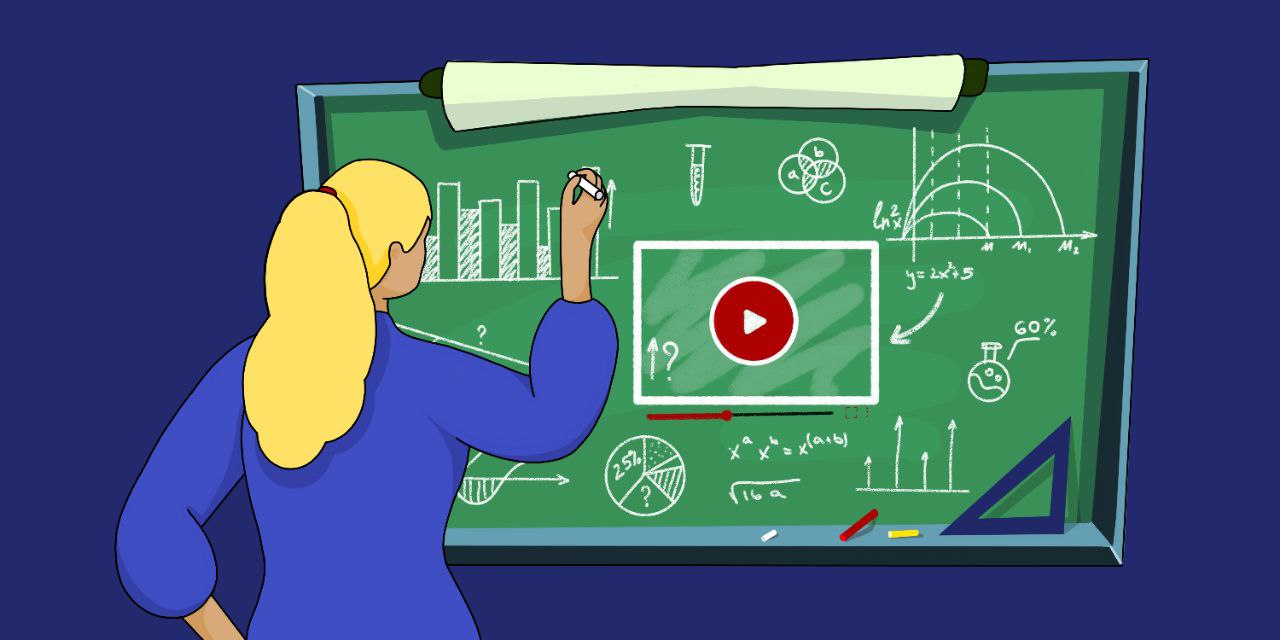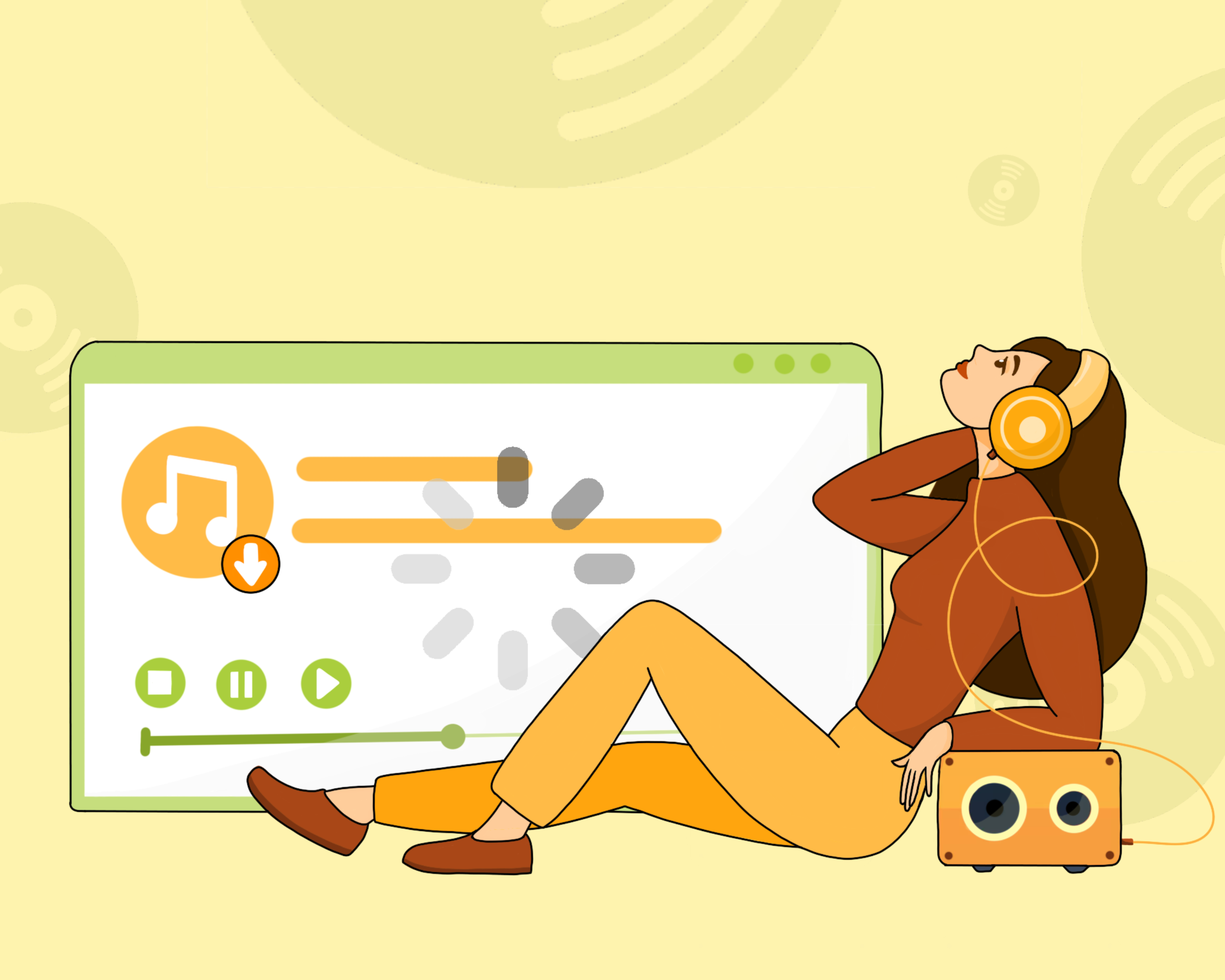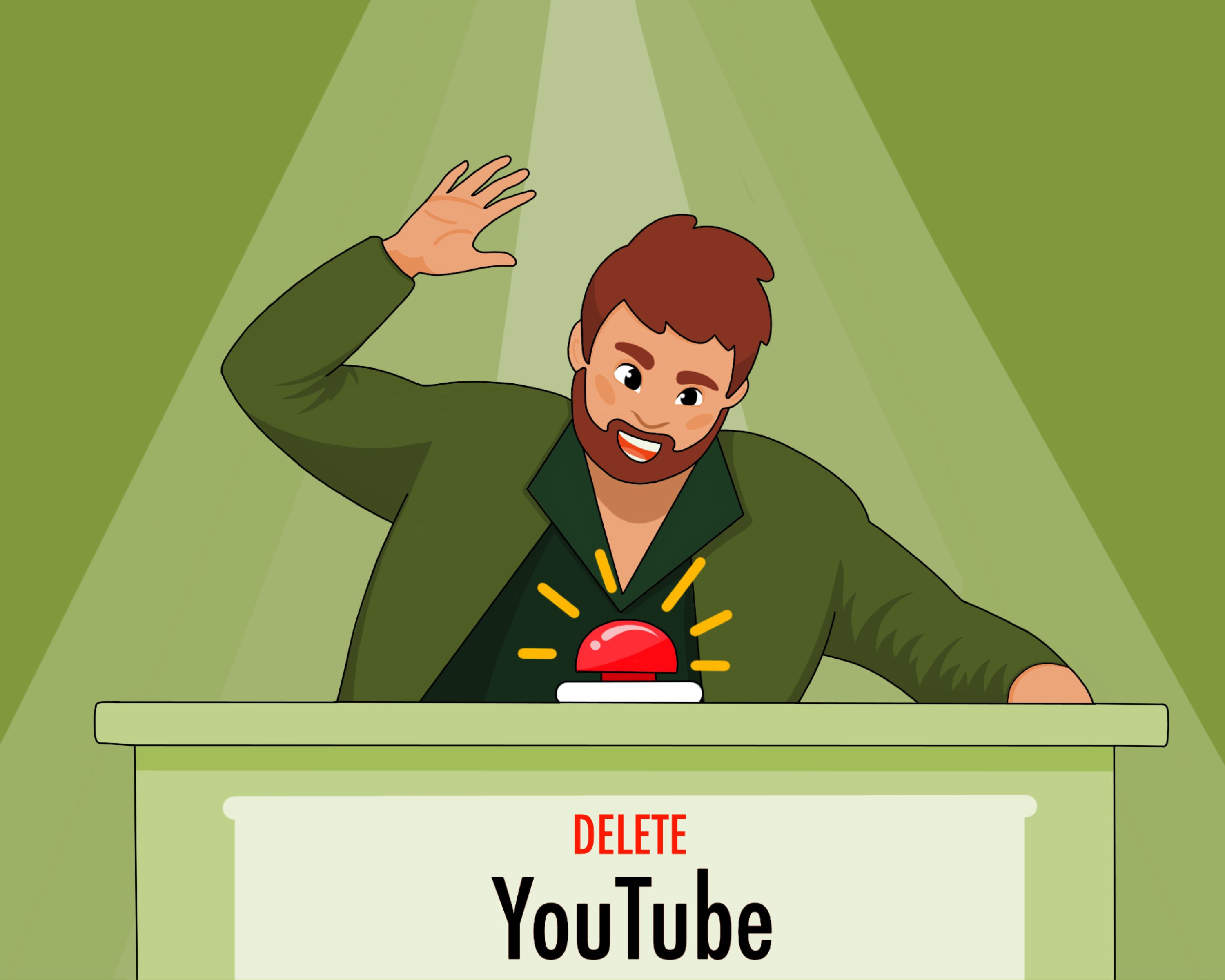What Kind of Videos Do Viewers Love? A Successful Video Formula.

What makes a successful channel? You probably often ask yourself this question and we have the answer. There are three components that influence your video: the creator’s image, video content, and interaction with the audience.
Let's derive a simple formula for success on YouTube by solving a straightforward problem.
Segments: YouTube platform, creators and viewers.
- The main goal of YouTube is to keep the viewer on the platform for as long as possible.
It's essential to remember that YouTube needs to display advertisements and earn revenue from their impressions. However, without good viewer retention and engagement in the content people watch on the platform, there won't be any substantial revenue.
- The main goal of the viewer: to find a video that is personally interesting to them
It's simple: viewers either want to enjoy their time on YouTube or get answers to their questions, and this doesn't exclude their desire for enjoyment in the process.
- The main goal of a creator on YouTube is to engage viewers with their content
Here we can argue and say, "Well, my goal is to earn money," or, for example, "To gather like-minded people and just become popular."
It's true, everyone has their own personal goals when creating content on YouTube. However, without views from a target audience, you won't be able to achieve any of your goals. The main question for creators is how should you promote your content on YouTube so that viewers watch it.
On YouTube, everything is managed by recommendation algorithms, which show videos to different audiences. Therefore, if we understand the essence of how recommendation systems work, we can understand how to promote content.
You won't believe it, but algorithms are quite simple because their work is based on the interests of viewers. YouTube itself explains this in an official article.
Recommendation systems are built to help people find videos they want to watch. The platform analyzes billions of videos from creators and billions of views from viewers to connect content and audiences in a way that benefits everyone. Viewers find something interesting, and creators find their audience and views.
Okay, here we understand: find out what the audience is interested in, and your videos will take off. But just making an interesting video is not enough; there must be some criteria for assessing viewer interest, right?
Certainly, we can partially assess viewer engagement by looking at the analytics of our channel as a whole and each video individually – that's why YouTube provides us with this information in the "Creative Studio" section of our channel under the "Analytics" tab.
Upon looking at your analytics it is easy to get lost in the graphs and tables; there's so much information! It can take years to learn how to understand channel analytics properly.
So, let's be smarter, let's analyze the data that YouTube considers important when evaluating videos.
In the same article about YouTube's recommendation systems, it is mentioned that the most important indicators for promoting your video are clicks, watch time, survey results, and the number of likes, dislikes, and shares.
These signals work together for each video, so if only one metric is improving, the video may not be promoted. Also, you must keep in mind that the algorithms are very flexible; they adapt to each viewer and their habits, which also influences the evaluation of each video.
For example, if a viewer shares almost every video they watch, this positive signal may not be considered in evaluating the effectiveness of the video. Yes, it's that complex and intricate, so let's simplify.
- Clicks
CTR or click through rate is primarily focused around your thumbnails, titles, and introductions. This topic is extensive and hinges on how well you can manage the first impression and formulate the main idea of the video through elements that influence the click-through rate. However, having a high CTR alone doesn't guarantee that your video will be effectively promoted.
- YouTube polls
Polls are data that cannot be evaluated because creators don't have access to them. However, watch time, likes, dislikes, and "Share" are precisely the data that most influence a video's success. These elements are interconnected, with data available in analytics, essentially depending on the same factor: how interesting the video is to the viewer. So, to successfully promote content, you need excellent performance indicators such as average watch time, retention, and viewer reactions during the video, such as likes, dislikes, and "Share."
Here is the solution to the complex puzzle: for content to be successfully promoted, you must have excellent performance metrics, including average view duration, viewer retention, and audience reactions during viewing, such as likes, dislikes, and shares.
Why viewers watch or don't watch a video
Let's start reasoning in reverse: why wouldn’t a person watch your videos? There are three reasons for this:
1. The video's topic doesn't suit the target audience.
2. The viewer does not like the creator.
3. The video is boring.
Let's start with the first point: YouTube and video optimization through titles, descriptions, and tags are responsible for targeting your audience. The platform relies on this metadata.
As for the second point about personal taste in choosing a YouTuber, whether an individual viewer likes or dislikes a creator is not entirely within the uploader’s control. No matter how charming or cute one may be, there will always be those who don't like them. And that's okay.
However, we can influence about 1% of decisions—not in terms of whether the viewer will like us or not, but in terms of how they perceive us in their content, the character and image we present to them.
The last point about the video being boring is entirely, 144%, the responsibility of the creator. However, the concept of "boring" needs to be clarified.
What is a boring video?
Viewers might find a video uninteresting because, for example, it lacks a plot. Or there is a plot, but it doesn't captivate the audience. Perhaps it does captivate the audience, but the visuals are so dreary that even an interesting story within the video can't salvage it. Alternatively, the visuals and the plot may be fantastic, but viewers still dislike the video because the theme is not fully explored or poorly explored. There might be many mistakes in the video, despite its overall quality.
"Boring" is a very broad term. Unfortunately, it's impossible to predict and account for every nuance when creating a video. However, you can reduce the number of basic mistakes by considering certain factors. The more you gain experience by creating content, experimenting with new things in your videos, and analyzing audience reactions the better.
Keep in mind that without analyzing your successes and failures, you'll be endlessly stuck in one place, and your videos won't gain viewership.
Let's revisit the moment when we mentioned that we can influence about 1% of how we present ourselves to viewers, which can play a role in increasing the viewing time of a video. Our on-screen image also affects whether a video is perceived as boring or not. Let's delve into this in more detail.
How does the author's image influence the audience's interest?
Let's start with an obvious but crucial idea.
The better you know yourself, the easier it will be for you to leverage your strengths.
If you understand who you are and what skills you possess, it becomes easier to grasp what you can offer to your audience. This isn't necessarily about having professional-level speaking or acting skills. It's about being confident in yourself, your capabilities, and the belief that people will want to listen to you.
Another important point is that you need to demonstrate your uniqueness.
Viewers appreciate certain vloggers for their authenticity, specific character traits, and communication style. It's no secret that on YouTube, those who know how to present themselves gain traction. If you think you lack any unique qualities, believe me—you have them. We are all born with a certain set of characteristics that everyone develops uniquely throughout life. People are unique, and yet there can be commonalities with others.
Often, this principle is how we find friends and partners. The same applies to YouTube: we gather around our unique personalities those with whom we share common traits and interests. If even just 5 people, as an example, come to your channel and watch something, you can be confident they watched you. They subscribe and remain viewers because of you, your personality, and your unique content.
If you want to discover your individuality and unique qualities, open up to yourself, analyze what you like and dislike about yourself, and accept it. In fact, half the journey to having viewers want to listen to you is expressing your individuality in your videos. Your flaws, as well as your strengths, make up the personality that viewers will appreciate. So, the next important point is—don't be afraid to declare your unique qualities.
It might be scary, but keep in mind that most people are enamored by those who aren't afraid to show themselves because these people do so without internal limitations. Deep down, everyone wants to be brave and confident, and those who aren't afraid to demonstrate themselves become successful.
And here's a secret: no one is born a successful vlogger, businessman, or anything else! It all comes from experience. You might be born into a wealthy family with a great family business, but if you don't learn to manage and control it, you can lose everything. In the YouTube world, Mr. Beast is an excellent example of someone who isn't afraid to be himself, showcase his unique qualities, and share it with people. And look where it led him.
But most often, successful vloggers don't possess some secret ingredient. They do their job well, know themselves, their capabilities, and desires. The ability to speak on camera, be confident, and present yourself is a skill that anyone can develop.
Ideally, the skill of presenting yourself on camera should be developed by every YouTuber who wants to achieve something on the platform. It's not an innate quality; it's a skill. No one is born with the ability to speak on camera.
Like any process, the development of this skill will contribute to your overall experience, making you an expert not only in the topic you choose to cover on YouTube but also turning you into a more skilled and expert vlogger. And this is crucial in working on YouTube.
In addition, speaking on camera and publishing videos on the internet make us more free and uninhibited.
In the end, you should ultimately like what you do. If you don't enjoy reviewing videos with yourself in the frame, if you're annoyed by how and what you say, then why blame the viewers? It's obvious that if you don't like what you do, no one else will.
If you want people to listen to you and enjoy watching your videos, you need to speak to someone, not just at the camera. This is one of the skills you must develop while speaking on camera.
Remember that establishing a connection with the audience is not only about visual contact and articulate speech but also about your body language: how open you are, whether you allow yourself to feel and appear comfortable on camera.
Therefore, don't record videos when you're tired, in a bad mood, or unwell because content created under duress won't bring pleasure to you or your viewers. And while these things may seem insignificant, they are subconsciously perceived by people. Someone may start your video, not understand exactly what's wrong with you but decide not to continue watching because they feel discomfort within themselves. For instance, you might have recorded this video when you were sleepy and tired, even though it doesn't seem like such a noticeable factor.
If you create videos without showing your face, I recommend at least using your own voice because it allows you to demonstrate your unique voice through tone and intonation, which are also part of our individuality. A robotic voice robs you of this.
How does the content of a video affect viewers' interest?
Let's start with the fact that content can be both conceptual and technical.
Conceptual content includes everything related to the idea, theme, and structure of the video—what questions you address throughout the video, what issues you solve, how you use storytelling, and how you build the plot.
Technical content, on the other hand, pertains to shooting, composition, editing, effects, music, and other, let's say, "decorative" elements that you can add during filming and editing.
In an ideal world, you come up with the structure of the video and even all the visual decisions before you start shooting. YouTube is already full of boring videos without any idea or purpose, so why not try to spice up the story with high-quality and well-thought-out content?
The more interesting the video, the easier it is to hold the viewers' attention. An engaging video comes from understanding what storytelling is, how to work with it, what a three-act structure is, and why it's important to know and understand all of this.
All technical decisions that go beyond cutting pauses and adding background music are secondary tools that serve the same purpose: to make the video more interesting, captivate the audience, and increase viewer retention.
Strive to show, not just tell your story: images are easier to perceive than text, after all, you need to listen to it. To prevent people's attention from drifting, you can change backgrounds, alter the video format, enliven it by simply changing shots or framing.
Switching focus through changes in shots, cutaways, zooming, and other editing tools is the simplest way to diversify the video sequence, especially if you're short on ideas.
Adding the above visual solutions in a video is one way to address the issue of weak viewer engagement.
Don't forget that even simple things like captions, images, sounds, and even memes can diversify your video sequence. The key to all of this is not to use any of these techniques just for the sake of having them. Every decision, including technical ones, should contribute to the overall idea of your video.
You can make a video dull and boring due to the lack of variety in the visual sequence, just as you can overload it with various effects and solutions. Musical and sound effects should also be carefully chosen to convey the atmosphere of the video and your mood. Music is a powerful tool. Sometimes it plays such a crucial role that there was even a challenge on TikTok where you take a specific atmospheric melody, overlay it on your latest video, and it acquires that atmosphere, regardless of what's happening in the actual video.
Many people forget about the importance of the tempo and rhythm of the video—the dynamics you maintain throughout the content. Relentlessly eliminate unnecessary information, pauses, and disclaimers if you intended to create an energetic video. Conversely, try not to rush and build your video into an immersive experience if that ia not the intended mood.
And most importantly, don't plan something you won't be able to execute. When you hit the ceiling of your capabilities and constantly delay shooting, video editing, or simply keep thinking that the video isn't good enough for the world to see, sooner or later, you'll lose interest in doing anything and become disappointed in being a content creator.
How to increase viewer engagement with videos
We've covered the technical side, but how do you influence audience reactions? Let's think about it. Imagine you just met someone and immediately asked them for a loan. What's the likelihood of them refusing? Almost certain, because they don't know you, they don't trust you, and there's a fear you might take the money and disappear.
Now, picture asking for a loan from your childhood friend, someone you've been inseparable from for decades. The outcome seems completely different, right?
The same goes for YouTube. When viewers don't know who you are, why should they trust you, you have no idea who your audience is, asking for reactions is unlikely to yield much. Remember that on YouTube creators are paid in one currency – the audience's time and attention. If you want to reach them, you have to do something to engage them, make them like you, and offer something in return, like an interesting video.
The most crucial tool to understand how to engage viewers and motivate them to react is the audience portrait.
The better you understand your audience's pains and needs, the easier it is to provide them with a desired solution.
It's also important to communicate and interact with your audience, asking them directly what they want, what they like, and what they don't. Don't hide your emotions, show what you feel, and share your thoughts.
Today, more than ever, it's crucial to be authentic and sincere, showing viewers that you are just as human as they are.
You now have a much better understanding of the importance of a creator’s image, video content, and interaction with the audience. Put in the effort and heed our advice to create truly cool and unique content on YouTube.




